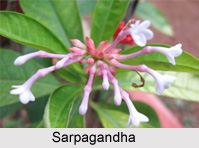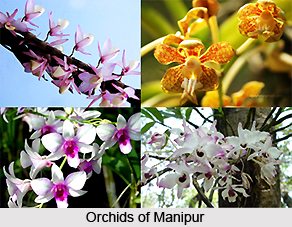 Dhamargava, an Indian Medicinal Plant is a large climber with a stout. The biological name of Dhamargava is Luffa cylindrica M. Roemer. In English Dhamargava is known as sponge gourd or vegetable sponge. This Indian medicinal plant is cropped all over the country. Dhamargava is known in assorted names all over India. In Bengali Dhamargava is named Dhundal, Hastighasha; in Gujarati as Galaka, Martigonsali, Turia; in Hindi it is named Ghiatorui, Nenua, Purula; in Kannada as Tuppahirekai; in Konkani as Porgonsali, Por-Gousali; in Malayalam as Kattupeechal, Kattupic-Cinna; in Marathi as Ghadaghosali, Ghosali, Paroshi; in Punjabi as Ghiatori, Ghigandoli, Ghitu-Rai; in Tamil as Mozhuku Pirkankai, Pichukku, Pikku; in Telugu as Guthibira, Gut-Tibira, Netibira, Nunebira and in Urdu it is named Turi.
Dhamargava, an Indian Medicinal Plant is a large climber with a stout. The biological name of Dhamargava is Luffa cylindrica M. Roemer. In English Dhamargava is known as sponge gourd or vegetable sponge. This Indian medicinal plant is cropped all over the country. Dhamargava is known in assorted names all over India. In Bengali Dhamargava is named Dhundal, Hastighasha; in Gujarati as Galaka, Martigonsali, Turia; in Hindi it is named Ghiatorui, Nenua, Purula; in Kannada as Tuppahirekai; in Konkani as Porgonsali, Por-Gousali; in Malayalam as Kattupeechal, Kattupic-Cinna; in Marathi as Ghadaghosali, Ghosali, Paroshi; in Punjabi as Ghiatori, Ghigandoli, Ghitu-Rai; in Tamil as Mozhuku Pirkankai, Pichukku, Pikku; in Telugu as Guthibira, Gut-Tibira, Netibira, Nunebira and in Urdu it is named Turi.
There are many medicinal properties and uses of this Indian Medicinal Plant, Dhamargava. The tender fruit of Dhamargava is considered diuretic drug and lactagogue. This Indian medicinal plant is utilized to treat gastric distress and leprosy. The fruit is regarded as an excellent tonic and medication that treats spleen diseases, leprosy, piles, fever, hematuria, syphilis and bronchitis. The juice of the Dhamargava fruit is purgative. The seed oil is used as a substitute for olive oil which revitalizes the skin.
Dhamargava has 5-angled, pubescent stem with tendrils that are 2 to3 branched. The leaves of the plant are large in size, about 10 to 20 cm in length and 9 to 21 cm in width. The male and female flowers of sponge gourd are bright yellow. The peduncles of the male flowers are larger in size than the female flowers. The fruit of the Dhamargava are smooth, cylindrical with dark green longitudinal lines that are fibrous within. The seeds of fibrous are 1.2 cm in length and 0.8 cm in width including the narrow, smooth, marginal wing, broadly ellipsoid, longitudinally compressed, rough on surface and blackish in colors.
The ripen fruits of this Indian medicinal plant, Dhamargava, are often left on the vine to dry to generate sponge. The dry sponge is widely used for bathing, scrubbing dishes and kitchen utensils, washing cars, and for a variety of other purposes. These dry Dhamargava are known commercially as `loofah sponges`.











